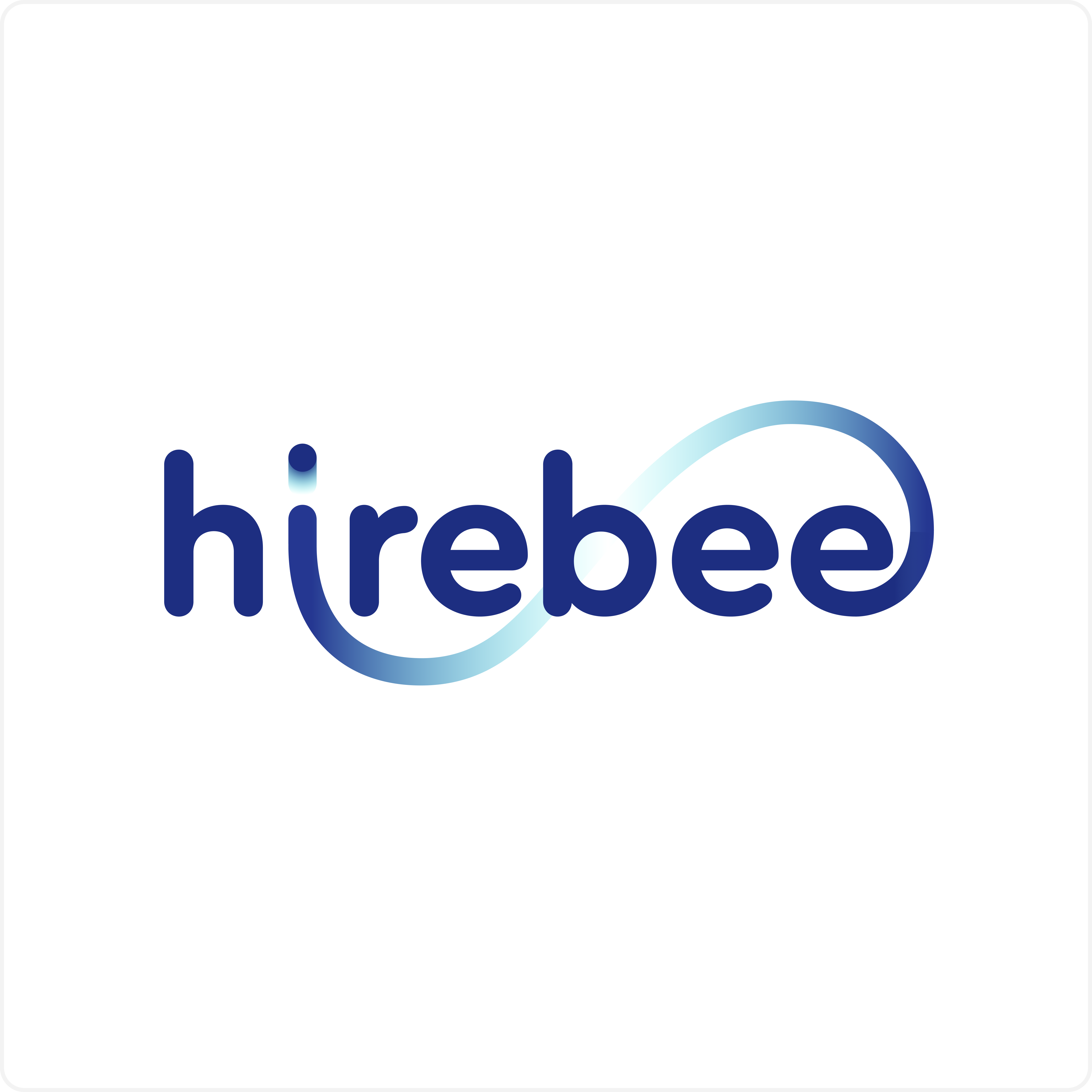In the fast-paced world of recruitment, companies are increasingly recognizing the importance of prioritizing the candidate experience. Gone are the days when hiring was solely about evaluating applicants; now, it’s about fostering a two-way relationship that benefits both the organization and the potential employee. One powerful tool that is gaining prominence in this quest for a more candidate-centric hiring process is the use of candidate surveys.
Surveys provide a unique opportunity for employers to engage with candidates on a deeper level, understand their needs, and tailor the hiring process accordingly. This blog will delve into the transformative potential of surveys in reshaping the recruitment landscape. We will explore how surveys empower organizations to gather invaluable insights, fine-tune their hiring strategies, and, most importantly, create a more inclusive and empathetic candidate experience.
Join us on this journey as we unravel the key benefits of incorporating surveys into your hiring process, sharing practical tips for designing effective questionnaires, and showcasing real-world success stories. Discover how embracing a candidate-centric approach can lead to improved retention rates, enhanced employer branding, and a workforce that is genuinely aligned with your company’s values and goals. It’s time to revolutionize your hiring process with the candidate’s voice at its heart. Hirebee can help your team develop effective surveys to create a more canddiate-centric hiring process.
Table of Contents
ToggleWhat Is A Candidate-Centric Hiring Process?
A Candidate-Centric Hiring Process is an approach to recruitment and selection that places the candidate’s needs, preferences, and overall experience at the forefront of the hiring journey. In this approach, the hiring organization takes deliberate steps to ensure that the process is designed and executed in a way that prioritizes the well-being and satisfaction of job applicants.

There are many reasons why a Candidate-Centric Hiring Process is important, such as:
Enhanced Candidate Experience:
By focusing on the candidate’s perspective, organizations can create a more positive and engaging experience for job seekers. This can lead to a stronger employer brand, attracting top talent and increasing the likelihood of successful hires.
Improved Quality of Hires:
When candidates have a favorable experience throughout the hiring process, they are more likely to accept job offers and remain committed to the organization. This can result in higher retention rates and a workforce that is a better fit for the company culture and requirements.
Competitive Advantage:
In a job market where candidates have more choices, a candidate-centric approach can set an organization apart from competitors. It demonstrates a commitment to treating individuals respectfully and valuing their contributions.
Valuable Feedback:
By actively seeking and listening to candidate feedback, companies can identify and address any shortcomings in their hiring processes, making continuous improvements. This feedback loop helps create a more efficient and effective recruitment system.
Long-Term Success:
A candidate-centric approach can lead to long-term success in attracting, hiring, and retaining top talent, ultimately contributing to the organization’s growth and success in the marketplace.
Benefits of A Candidate-Centric Hiring Process
The benefits of a Candidate-Centric Hiring Process are numerous and can significantly impact an organization’s recruitment efforts, employer brand, and overall success.

This approach, which prioritizes the candidate’s experience and needs, offers a range of advantages:
Improved Applicant Experience:
A candidate-centric approach focuses on providing a smooth, respectful, and transparent experience to job seekers. It acknowledges that candidates are potential future employees and should be treated with the same respect as current staff. This positive experience can have a lasting impact on the candidate, making them more likely to accept an offer, speak positively about the company, and reapply in the future.
Attracting Top Talent:
A candidate-centric process makes your organization more attractive to high-quality candidates. When potential hires hear that your company values their experience and opinions, they are more likely to engage with your job postings, making it easier to connect with top talent in your industry.
Higher Acceptance Rates:
Candidates who have enjoyed a positive experience during the hiring process are more likely to accept job offers. This means reduced time and effort spent on sourcing, interviewing, and extending offers to multiple candidates, ultimately expediting the hiring process.
Increased Retention:
A candidate-centric approach ensures that candidates are not just selected for their skills but also for their cultural fit and alignment with the company’s values. When candidates feel that the organization respects their unique qualities, they are more likely to stay with the company in the long term, contributing to higher employee retention rates.
Improved Employer Brand:
A positive candidate experience contributes to a strong employer brand. Candidates who feel respected and valued are more likely to share their positive experiences on social media, company review websites, and in their professional networks. This positive word-of-mouth can attract even more high-caliber candidates and enhance the organization’s reputation as an employer of choice.
Better Candidate Pool Insights:
A candidate-centric approach often includes collecting feedback from candidates at various stages of the hiring process. This feedback can provide valuable insights into what is working well and what needs improvement. These insights can lead to more informed decisions and continuous process enhancements.
Streamlined Recruitment Process:
A candidate-centric recruitment process typically involves assessing and improving each step of the recruitment journey. This optimization results in a more efficient and streamlined hiring process, saving time and resources for both the candidates and the organization.
Increased Diversity and Inclusion:
By actively seeking to understand and meet the diverse needs of candidates, a candidate-centric approach can foster a more inclusive hiring environment. It encourages organizations to remove biases from their processes, making it easier to attract and hire candidates from a wide range of backgrounds and perspectives.
Improved Offer Acceptance Predictability:
With a candidate-centric approach, organizations can have a more accurate idea of whether a candidate is likely to accept an offer or not. This helps in managing expectations and making better decisions when extending job offers.
Long-Term Success:
Overall, a candidate-centric approach contributes to an organization’s long-term success. By consistently attracting and retaining the best talent, fostering a positive work culture, and continually improving the recruitment process, the company is better positioned for growth and competitiveness in the marketplace.
In today’s competitive job market, where candidates have more choices than ever, adopting a candidate-centric hiring process is a strategic move that can set your organization apart and lead to sustained success in recruiting and retaining top talent. It’s a win-win situation that benefits both candidates and employers, ultimately contributing to a more prosperous and productive workforce.
Using Surveys To Tailor the Recruitment Journey to Individual Candidate Needs
Surveying candidates’ needs to create a personalized candidate journey is a strategic approach that can greatly enhance the candidate experience and improve the efficiency of your hiring process. By gathering valuable insights directly from candidates, organizations can adapt and customize their recruitment procedures to meet individual preferences.

Here are several ways to use surveys effectively in achieving this goal:
Personalized Communication Preferences:
Start by sending applicant preference surveys to candidates to understand their preferred communication channels and frequencies. Some candidates might prefer emails, while others may prefer phone calls or text messages. Tailoring your communication to individual preferences ensures that candidates remain engaged and informed throughout the process.
Customized Application Processes:
Use surveys to inquire about candidate preferences regarding the application process. For instance, some candidates may prefer a quick and straightforward application, while others might appreciate a more comprehensive application that allows them to showcase their skills and experiences. Tailor the application process based on these preferences.
Flexible Interview Scheduling:
Surveys can help candidates express their availability and scheduling preferences. This information can assist in coordinating interviews at times that are most convenient for the candidates, reducing scheduling conflicts and creating a more positive experience.
Tailored Assessment Methods:
Inquire about the types of assessments candidates are comfortable with, whether they prefer coding challenges, behavioral interviews, or case studies. This allows organizations to tailor the evaluation methods to individual strengths and skills.
Location and Remote Work Preferences:
Understanding whether candidates are open to relocation, prefer remote work, or have specific location preferences is crucial. Surveys can help determine this, ensuring that job offers align with candidates’ geographic and remote work needs.
Feedback on the Interview Process:
After interviews, send surveys to candidates to gather feedback on their experience. Ask about the clarity of interview questions, the conduct of interviewers, and any areas of improvement. This feedback is invaluable for enhancing the interview process.
Benefits and Compensation Expectations:
Inquire about salary expectations and benefits priorities. Knowing candidates’ compensation preferences allows organizations to make more competitive offers and tailor benefits packages to meet individual needs.
Job Role Preferences:
Understand candidates’ career aspirations and role preferences. This information can help guide them to the most suitable positions and provide a more personalized job matching experience.
Tailored Onboarding Processes:
Even before the hiring decision, collect insights on what candidates value in the onboarding process. This can help customize onboarding materials, training, and orientation to make new hires feel more welcome and engaged from day one.
Post-Hire Surveys:
After a candidate is hired, continue to use surveys to gather feedback on the onboarding experience, training, and their initial days on the job. This information can be instrumental in improving the post-hire journey and reducing turnover.
Iterative Process Improvements:
Regularly review survey feedback and adapt your recruitment process accordingly. This iterative approach ensures that you are continuously improving and fine-tuning the candidate experience based on the insights you gather.
By incorporating surveys into your recruitment process, you demonstrate a commitment to understanding and meeting individual candidate needs. This not only enhances the candidate experience but also helps your organization make better-informed hiring decisions. It’s a win-win situation that fosters positive relationships with candidates, leads to higher-quality hires, and ultimately strengthens your employer brand.
Conclusion
In today’s competitive job market, creating a tailored hiring process is more crucial than ever. Surveys offer a powerful tool to achieve this goal. Through recruitment customization, you not only gain valuable insights into the candidate experience but also demonstrate a commitment to transparency and communication.
Through surveys, you can assess various aspects of your hiring process, from the initial application to the final interview. This data empowers you to make data-driven improvements that enhance the candidate’s journey and overall satisfaction. Candidates feel heard and respected, leading to a positive perception of your organization even if they don’t get the job.
Moreover, a candidate-centric approach can help your company attract and retain top talent. When job seekers notice that you prioritize their experience, they are more likely to choose your organization over competitors. In addition, candidates who had a positive experience, even if they weren’t selected, might become advocates for your brand, which can be a powerful recruitment tool.
In conclusion, by incorporating surveys into your hiring process, you not only improve the experience for candidates but also strengthen your employer brand. It’s a win-win strategy that not only helps you make better hiring decisions but also positions your company as an employer of choice in a candidate-driven job market. Through Hirebee, your company can leverage surveys as a means to create a more candidate-centric hiring process and increase talent acquisition.
FAQs
What is a candidate-centric hiring process, and why is it important?
A candidate-centric hiring process is an approach that prioritizes the candidate’s experience throughout the recruitment journey. It focuses on understanding and meeting the needs and expectations of job applicants, ultimately enhancing the overall hiring experience.
How can surveys improve the candidate experience in the recruitment process?
Surveys allow organizations to collect valuable feedback from candidates at different stages of the hiring process. This feedback can help identify pain points, make improvements, and tailor the process to candidates’ preferences, leading to a more positive experience.
What types of surveys should be used in the candidate-centric hiring process?
Common survey types include application feedback surveys, interview experience surveys, and post-hire satisfaction surveys. Each type serves a specific purpose in gathering insights on the candidate’s journey.
How can employers ensure survey responses are candid and honest?
To encourage honest responses, it’s essential to assure candidates that their feedback is anonymous and will not impact their candidacy. Using a third-party survey platform can also enhance confidentiality.
What are some best practices for implementing surveys in the hiring process?
Best practices include keeping surveys concise, offering multiple response options, and regularly analyzing feedback to make continuous improvements. Effective communication with candidates about the survey’s purpose is also crucial for success.









